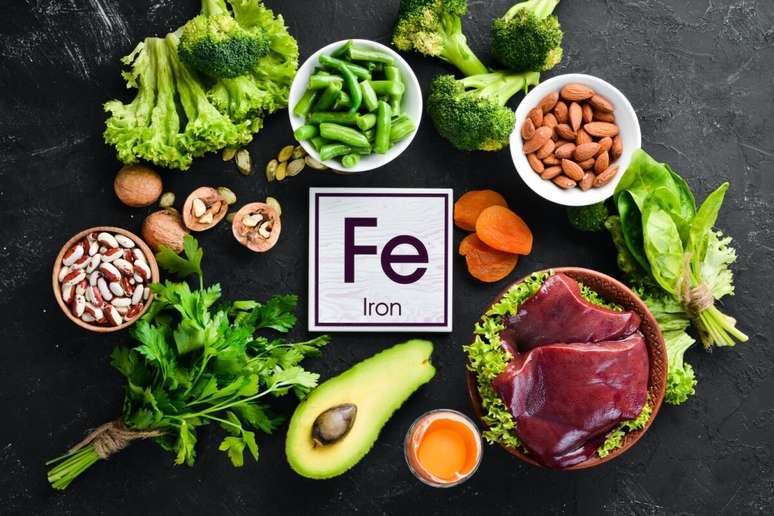UNESP researchers evaluated the effect of three different low-cost training programs on several functional and cardiovascular parameters
A study of 92 elderly women in socioeconomically vulnerable situations compared the effectiveness of different low-cost community exercise programs in improving and/or maintaining several cardiovascular and functional parameters, such as waist circumference, blood pressure and, most importantly, arterial stiffness – a risk factor for atherosclerosis.
The results, published in European Journal of Preventive Cardiologyindicate that combining high-intensity interval training (HIIT) with muscle strengthening was the option with the greatest health benefits.
Consisting of rapid sequences of very intense exercises interspersed with short periods of rest, HIIT provides stimuli that work the entire body.performed in the shortest possible time. This type of training has been used for decades by high-performance athletes and has become very popular in recent years, especially because it offers shorter sessions and no equipment required.
The other protocols tested in the research were muscle strengthening practiced alone or associated with moderate aerobic training. The work was conducted with the support of FAPESP at the Faculty of Sciences of the Universidade Estadual Paulista (FC-Unesp), Bauru campus.
The different programs were practiced by volunteers twice a week, for nine months, in community centers for seniors. The participants’ health parameters were assessed before the first exercise session, immediately after the end of the intervention and three months after its interruption.
In comparison, the two combined exercise programs (HIIT strengthening and moderate aerobic strengthening) were equally effective in reducing waist circumference (3.3 centimeters decreased, on average), and this benefit was maintained even after training was stopped.
However, only the combined training involving HIIT was effective in reducing systolic blood pressure (7.9 millimeters of mercury – mmHg) and arterial stiffness (0.69 meters per second – m/s). The evaluation also showed that in this group only arterial stiffness remained lower three months after the end of the training.
All exercise programs were effective in improving functional performance, but only the group that practiced HIIT combined with muscle strengthening maintained, at least partially, functional improvements (handgrip strength, flexibility, lower limb strength and mobility) after the end of the training.
“The lack of improvement in cardiovascular parameters in the groups that performed only resistance training or strength training combined with moderate-intensity aerobic activity suggests that HIIT was responsible for the improvement in blood pressure and arterial stiffness. This superiority of HIIT could be, at least in part, attributed to the constant need to adjust blood vessels during interval exercise,” assesses Emmanuel Ciolac, professor at FC-Unesp and co-author of the article.
During high-intensity exercise, heart rate and stroke volume (the amount of blood leaving the heart with each beat) increase, the researcher explains. Generally, this increase is proportional to the intensity of the exercise, and as a result, the arteries and smaller vessels need to adjust (vasodilate) to accommodate the increased blood flow. Likewise, during the less intense period of interval training, also called recovery, there is a reduction in vasodilation to accommodate the smaller volume of blood leaving the heart.
“Our hypothesis is that the main mechanism underlying the improvement in arterial stiffness is associated with the constant need to adjust the vessels, producing more or less vasodilatory substances, during periods of high intensity and recovery from interval exercise”, explains the researcher to the FAPESP Agency.
Public order
It is important to emphasize that elderly and low-income women represent one of the groups most vulnerable to cardiovascular disease. Therefore, the authors believe that the results of the study, which indicate the benefits of a low-cost exercise program, may have important impacts on the well-being of this population and on the formulation of public policies for the prevention and reduction of cardiovascular disease.
“We expected that the combined HIIT and muscle strengthening training would have greater cardiovascular benefits, as we have conducted similar studies with other at-risk populations over the past decade. [obesos e diabéticos, por exemplo] and this combination has always been very beneficial for cardiovascular and metabolic parameters. But what surprised us most was the maintenance of the improvement in arterial stiffness even after three months of suspension of training. We can say that training has reduced the vascular aging of these women”, underlines the researcher.
As Ciolac explains, arterial stiffness tends to increase the risk of cardiovascular disease. “A 7 mmHg reduction in systolic blood pressure is quite substantial, as it significantly reduces the risk of these women having a cardiac event or stroke. Arterial stiffness is considered the main indicator of vascular aging and is a very important variable for the increase in systolic blood pressure itself,” she explains.
The researcher emphasizes that previous studies conducted by his group have shown that HIIT does not pose risks for hypertensive individuals, obese individuals, diabetics or clinical populations in general. “The only thing that is recommended is to carry out a prior assessment to confirm that the individual does not have contraindications to its practice, such as a high risk of heart attack. But, overall, it is a very safe modality,” says Ciolac.
Source: Terra
Ben Stock is a lifestyle journalist and author at Gossipify. He writes about topics such as health, wellness, travel, food and home decor. He provides practical advice and inspiration to improve well-being, keeps readers up to date with latest lifestyle news and trends, known for his engaging writing style, in-depth analysis and unique perspectives.






-tocxfqlohicw.jpg)

